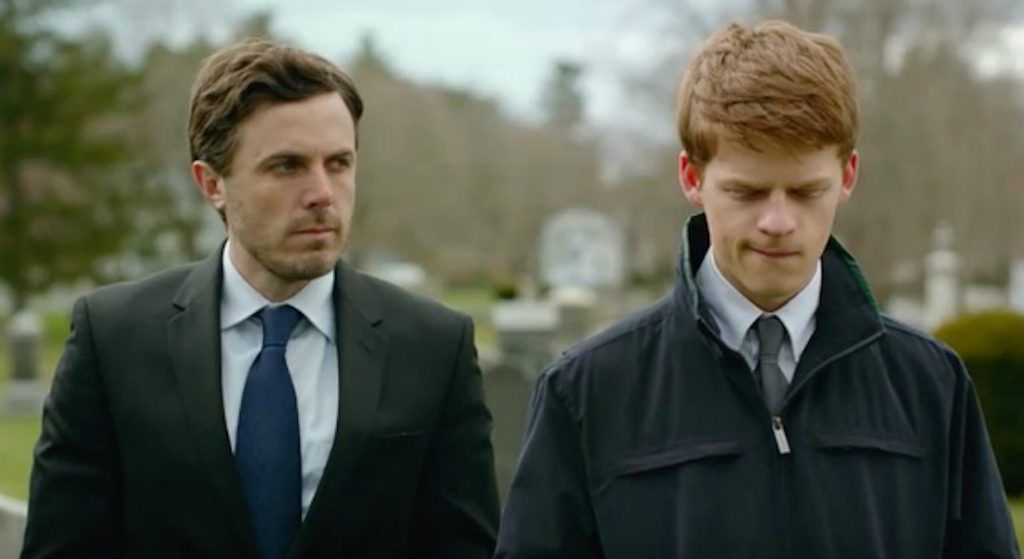Oscar Watch: Editor Expertly Shreds Time in Manchester By the Sea
Writer-director Kenneth Lonergan famously spent years in the editing suite trying to achieve perfection on his previous movie Margaret. He shot the film in 2005, delivered a much debated cut in 2008 and three years later watched the picture open in two theaters. Lonergan's comeback effort Manchester by the Sea represents an astonishing return to form, widely expected to land a Best Picture Oscar nomination on the strength of Casey Affleck's moving performance as a New England man haunted by his past.
The film’s Brooklyn-based editor Jennifer Lame, a frequent Noah Baumbach collaborator (Frances Ha, Mistress America) lobbied hard to land Manchester by the Sea. "In the post world, there were so many stories coming out of that Margaret project but I knew it wasn't Kenny being indecisive necessarily so I just put all that out of my mind." When her filmmaker husband Craig Shilowich (Christine) wrangled an over-the-phone job interview with Lonergan, Lame decided honesty was the best policy and told the director exactly what she though about his script. "I was so obsessed with wanting to work with Kenny that I'd read many drafts of Manchester by the Sea along the way and noticed he'd taken out some scenes in the latest version," she says. "I thought that was a mistake so I said to Kenny, 'Hey I noticed you cut three scenes and I really miss them.' Luckily he agreed with me."
After filming on Manchester wrapped, Lonergan joined Lame in the editing room last spring and tackled a substantial structural challenge: The primary narrative frequently flashes back to events surrounding a traumatic accident several years in the past. Regardless of time frame, Affleck's Lee Chandler looks the same, wearing the same haircut and scruffy beard. Filmmakers needed to make a clear distinction between past and present — or did they?
Lame recalls, "When Kenny first came in he was like 'Okay, what's your idea for the flashback device?' And I was like, 'Oh God, I didn't come up with any device' because to me that felt cheap. At the same time you have to let your audience know what's going on, so it became this nerve-wracking question: Can we get away without having any device at all?"
Once Longergan and Lame immersed themselves in the raw footage, they decided to forgo "Five years earlier" captions or shifts in visual style typically used to announce flashbacks. Lame says, "We realized the movie would have a bigger emotional effect on people if we don't use any kind of trigger. That way, you feel like the past and present are merged for Lee. If he ever stops doing little tasks for even a millisecond, he thinks about this horrible thing that happened in his past. We wanted you to feel even two percent of what Lee feels, living in this constant state of horror and shock."
Manchester by the Sea's most artful series of time cuts takes place an hour into the movie, when Affleck as Lee drifts into a reverie from hell while sitting in his lawyer's office. Half a dozen brief flashbacks tease the audience before Lee finally re-lives the tragic night that ruined his life. "For the trauma section," Lame says, "We created a rhythm where we inch it out some more until we finally stay in the (flashback) scene for a pretty long time. Until this point, it's been a mystery for the audience about what happened to this guy, so you're really curious when you finally see this horrible event slowly seep into his brain and completely take over."
Unlike Lonergan's post-production Margaret nightmare, Manchester by the Sea got edited efficiently in just six months to meet a November submission deadline for the Sundance Film Festival. Looking back on the editing process, Lame says "It was intense. Kenny's really tough. He’s very critical of himself and very precise. We went through so many versions of every scene because you're always thinking 'Maybe we can make it even better.' At some point we let it go and put the film to bed but to be honest, I don't think there's ever a moment where you sit there and go 'This is perfect.'"




